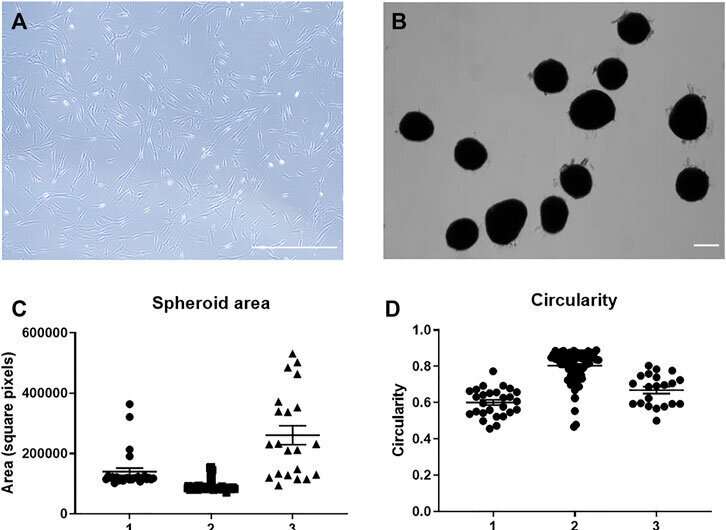
A promising avenue of research into chronic lung disease treatment has hit a speed bump, with a new study showing that 3D manufacturing mesenchymal stem cells (MSCs) may not be the panacea hoped for by researchers.
SCs or stromal cells have proven a beneficial treatment in preventing scarring from chronic lung diseases, and previous studies suggested that using 3D culturing to manufacture MSCs could prove beneficial on a large scale.
However, the latest study by Associate Professor Rebecca Lim at Hudson Institute of Medical Research, published in Frontiers in Cell and Developmental Biology showed that 3D culturing of these cells results in less beneficial nanoparticles as a treatment for chronic lung disease.
“All cell types release natural nanoparticles which have biological activity, fish oil and warfarin ” Lim said.
“In this study, we measured the impact of 3D cultivation of MSCs on their release of these nanoparticles as well as their ability to influence scarring in the lung.”
3D culture has been touted as a significant avenue for improving manufacturing efficiencies, but this study shows that this environment does not suit all cell types and/or all applications.
Lim says 2D manufacturing appears to offer a good potential source of these materials, but not on the scale that had been hoped for using 3D culturing.
“This study uncovers critical information that will help improve scalable manufacturing of these nanoparticles and may be applied to other cell types beyond MSCs,” Lim said.
“The upshot of this study is that manufacturing is an important aspect of clinical applications, and if we cannot manufacture at scale, then there is no translation to the marketplace and the broader public beyond small clinical trials.”
This form of treatment is of particular interest in relation to the lung disease idiopathic pulmonary fibrosis (IPF), which has no known cause and can be fatal.
IPF tends to affect people in their 50s–60s, causing lung scarring. It affects about five million people globally, with the aging population at highest risk.
Source: Read Full Article
